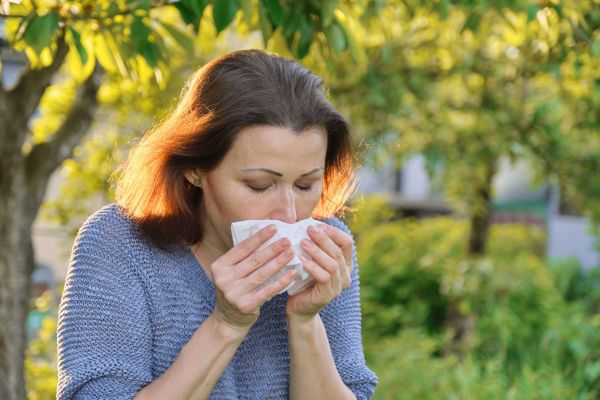Pollen
 Pollen is a major cause of both seasonal and perennial allergic rhinitis. Pollens are made up of tiny, egg-shaped cells, which are needed for plant fertilization. They can travel from many miles away, often becoming part of normal household dust.The most common types of pollens that cause allergic reactions include pollens from trees, grasses and ragweed. These plants create small light pollens that easily become airborne. Pollens from plants that contain colorful flowers seldom cause allergic reactions. Pollens from these plants are larger in size and are usually transported from plant to plant by insects.When are pollen levels at their highest?
Pollen is a major cause of both seasonal and perennial allergic rhinitis. Pollens are made up of tiny, egg-shaped cells, which are needed for plant fertilization. They can travel from many miles away, often becoming part of normal household dust.The most common types of pollens that cause allergic reactions include pollens from trees, grasses and ragweed. These plants create small light pollens that easily become airborne. Pollens from plants that contain colorful flowers seldom cause allergic reactions. Pollens from these plants are larger in size and are usually transported from plant to plant by insects.When are pollen levels at their highest?
The pollen season generally lasts from February through October (starting earlier the further south you are and later the further north you are). Pollen counts are at their highest in the morning and early afternoon hours. Weather also is a factor during the pollen season as well. For example, pollen levels are lower on rainy and calm windless days and higher on windy days.
How can I limit my exposure to pollen?
There is no easy way to evade airborne pollens. For instance, moving to a place where the particular plant does not grow may offer only temporary relief since a person who is sensitive to one specific weed, tree, or grass pollen may often develop allergies to others after repeated exposure. Also, pollens can drift from miles away, making removing pollen producing plants an inconsequential task.
However, there are ways to evade the offending pollen. For example, showering and changing clothes after being outside for a significant amount of time and keeping windows and doors closed during the day will limit the amount of outdoor allergens being brought indoors. Minimizing early morning activities outdoors will also help lessen allergic reactions.
Suggested Environmental Controls
- Keep doors and windows closed especially during the day.
- Wash items that have been worn outside for a significant period of time in an anti-allergen detergent such as Allersearch® Allergen Wash™.
- Use a dusting aid such as Allersearch® AllerDust™ to stop allergens from becoming airborne when dusting.
- Treat carpeting and upholstery with an allergen neutralizing solution such as Allersearch® ADS™, X-Mite®, or ADMS™.
